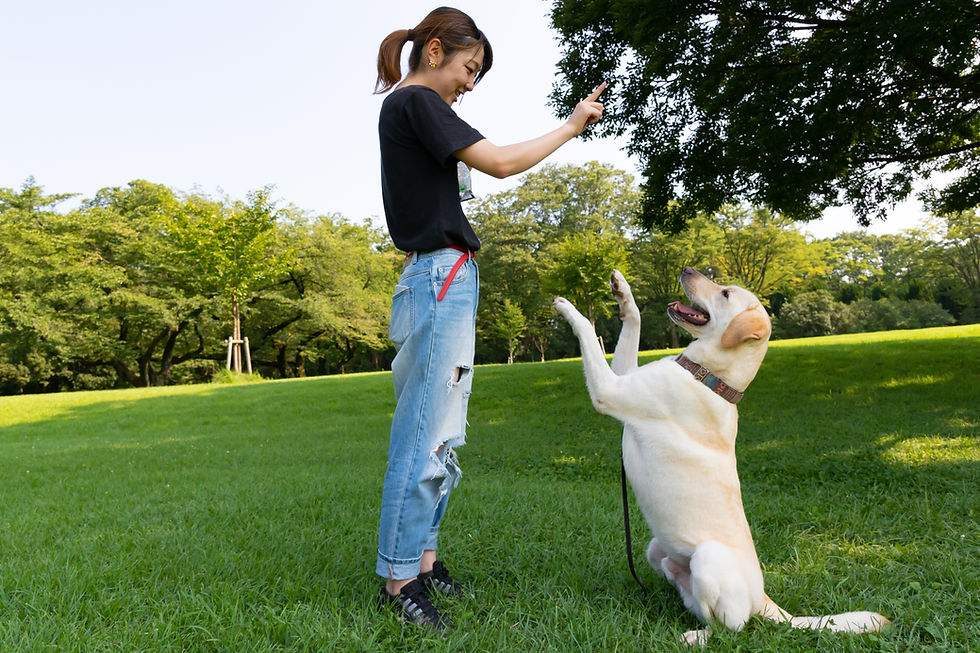Rewarding Your Dog
- Awesome Dog Academy

- Mar 1, 2021
- 2 min read
Updated: May 17, 2021
“My dog should listen to me because he loves me”
“My dog should obey because I expect it”
These two statements are things we hear often as dog trainers. We expect our dogs to do what we say, when we say it, every time we tell them to. Yet, we also expect them to do it without any reward whatsoever.
When you go through the process of baking cupcakes from scratch, you carefully measure the ingredients, you take the time to mix them together in the proper order. You artfully place the icing on top of the cupcake in preparation of eating your wonderful creation. After it is complete, you throw all of them away.
Nobody goes through all of that work without the reward of eating the cupcake! So why do we expect our dogs to do work without any promise of a reward. Dogs, just like humans, are motivated by the reward for their hard work. We are motivated to go to work because we will be rewarded with our paycheck, literally being paid for our time. Dogs do not view the world as us humans do, they do not understand the concept of obeying out of gratitude for a home and daily meals.

So, how do we pay our dogs for their hard work? How do we motivate them to do what we ask? We have to reward them! We approach our training in a way our dog understands. Dogs enjoy the immediate reward for their actions. If we use these rewards when our dog does something we want them
to do, this will encourage them to offer the good behaviors in the future! A dog who understands what you enjoy and what will be rewarded is much more likely to keep doing those things.
As children, we were rewarded for good behavior at the doctor’s office with a lollipop! We got star stickers when we did good on our homework. Because of these rewards, we were encouraged to behave, or to study. We did homework long after they stopped giving us fun stickers for it, and your dog will be the same!
When our dogs are learning new behaviors, we reward heavily. This encourages them to repeat these behaviors, to pay attention to us, to want to obey. As our dogs c
ontinue in their training, we can begin to use less treats, or what us dog trainers call “fading the lure”.
Once we have trained our dog, we first need to proof the behavior. To do that, you can find a wonderful example in our other blog “Does your dog know sit?” which is a perfect checklist for seeing if your dog is ready to start fading the lure. If you are intimidated by that list, here’s a simple test.
Tell your dog to sit 10 times
Count the number of times your dog sat and the times your dog did not sit
If your dog sat 8 out of 10 times, then your dog is at 80% on this behavior
Before you can start using less treats on the cue “Sit” your dog should be at 80% or higher. If your dog sat less than 8 out of 10 times, then you need to continue your original training.
Next month, we will cover the behavior of fading the lure



Comments